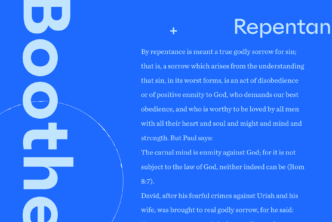It’s hard not to feel embarrassed for the poor flummoxed pastors who throw up their hands and confess, “I can’t explain how God is three in one.” It’s a kind of ritual incantation at the beginning of many sermons I’ve heard. If you attend a church that follows the liturgical calendar, you might hear it every year on Trinity Sunday.
It’s a little strange, for the doctrine of the Trinity is a doctrine, which means it’s a teaching—and you’d think it should be possible for a teaching to be taught.
I think what’s flummoxing these pastors is the mistaken notion that teaching the doctrine of the Trinity means explaining how God is three in one. By contrast, the Apostles’ Creed and the Nicene Creed, which are the two most important confessions of faith that teach the doctrine of the Trinity, never even use the word “three.” They say nothing about “how God is three in one.” Rather, they teach that God is Father, Son, and Holy Spirit. You can count to three if you want, but it’s hardly essential, and in fact you’ll understand the doctrine better if you forget about counting.
Related article: The Trinity 101: What Every Christian Should Know
The logic of the Trinity
That’s how the church fathers do it. Augustine, for example, gives us the basic logic of the doctrine in a formulation that comes down to seven simple statements.1 That logic starts out with a trio of statements about who is God:
1. The Father is God.
2. The Son is God.
3. The Holy Spirit is God.
Then it proceeds to distinguish:
4. The Father is not the Son.
5. The Son is not the Holy Spirit.
6. The Holy Spirit is not the Father.
And finally, it adds monotheism:
7. There is only one God.
So the word “one” is essential, because the doctrine of the Trinity is resolutely monotheistic. But the really important words are not numbers but names: Father, Son, and Holy Spirit. To believe in the Trinity is to believe in the One God who is named this way. And yes, once you do that, it makes sense to speak of God as “three in one.” There’s nothing wrong with the label, so long as we remember the Trinity is a divine mystery, not a numerical puzzle. The “three-in-oneness” is not something you have to explain in order to teach the doctrine of the Trinity.
The seven statements above display key features of the logic of the doctrine of the Trinity, including the fact that it doesn’t need arithmetic. It turns out that both ancient and modern logic often operate without arithmetic. But if you like puzzles, you might find yourself wanting to figure out how you can say that all seven statements, taken together, are true. After all, they literally don’t add up. It’s useful to be aware, however, that the church fathers were not very interested in this puzzle. When they emphasized the mystery of the Trinity, they mainly had in mind the eternal generation of the Son, his origination from the Father as God from God, which they regularly insisted was incomprehensible and beyond all understanding. They were not throwing up their hands about how God is “three in one,” but about how Jesus Christ is “begotten from the Father before all ages.”
Bad analogies for the Trinity
If you are interested in the “three-in-one” puzzle, there are some analogies you can use. None of them are really adequate, but some are better than others. You may have heard some of the bad ones in Sunday School. One analogy compares the Trinity to three parts of an apple: skin, flesh, and core. Another says the Trinity is like a three-leaf clover. And then there’s the analogy with three states of water: ice, water, and vapor.
These are all bad analogies because they are materialistic. They interpret God’s being in terms of the material that makes up God. But the fact is that there is no material that makes up God. God is immaterial. There’s no stuff that he’s made of, the way the ice cubes in your fridge are made of the same water that came out of your tap a few hours earlier.
3 persons of the Trinity
Likewise, God is not made up of three parts, because God does not have parts. Notice that Augustine’s formulation above does not say that the Father is part of God, but that the Father is God. And likewise the Son is not part of God; he is God. And likewise the Holy Spirit. Each one is a complete being, not just one part of a larger whole. This is what the church fathers were insisting on when they said that each one is a person. A human son is analogous to the Son of God, but a human hand is not. For the Son of God is a person, not a part. He is fully God and lacks nothing that belongs to the being of God.
We get a much better analogy for the Trinity when we follow the Christian tradition and speak of God as three persons. A human father and his son are, in a quite ordinary sense, two persons, and this is at least a little like God the Father and God the Son. Of course the Holy Spirit doesn’t perfectly fit the analogy, because the spirit of a human person is not the same thing as the person. This is one of many ways the analogy is predictably inadequate, because of the vast differences between human beings and God. Still, it’s an analogy rooted in biblical language, and it’s a whole lot better than comparing God to three parts of an apple.
Related article: Trinity or Triarchy? Is There Authority and Submission in the Godhead? by Michael Bird
However, this “social analogy,” as it’s sometimes called, goes wrong when it is taken too literally. Then you get God looking like a little society with three people in it, such as Peter, James, and John. Each of these human persons has a life independent of the others, has knowledge the others don’t have, and has a will of his own that can end up disagreeing with the others. In all these ways, the little society of Peter, James, and John is quite unlike the Trinity.
The Word and the Love of God
So the social analogy that compares three human persons to God is severely limited and has to be corrected by another and very different biblical analogy, based on the beginning of the Gospel of John. There we read of God and his Word with him in the beginning, the Logos through whom all things came to be (John 1:1–3). This points us toward the creative Word of God, “Let there be light” (Gen 1:3), as well as the Wisdom that was with God in the beginning when he created the world (Prov 8:22–31), and the Word that goes forth from God and does not return to him empty (Isa 55:11). These all describe the same Word that became flesh in Jesus Christ (John 1:14), who is the one “by whom all things were created, in heaven and on earth, visible and invisible” (Col 1:16).
Using this language as an analogy for God, you get something like the Mind of God and what it knows—the inner Word of his heart, as it were—and then the Holy Spirit looks something like the love of God. Or you could speak of God, his Intellect, and his Will. You could come up with many more of these “psychological analogies,” as they are called. Augustine explored quite a number of them, some of which he found more helpful than others, but none of which he thought was fully adequate. The love of God, he pointed out, is surely to be found in the Father and the Son as well as the Holy Spirit, and omniscient knowledge is found in the Father and the Spirit, not just in the Word. So we cannot simply identify the Spirit with God’s love and the Word with God’s knowledge.
All analogies fall short
An analogy is merely a likeness, after all, and no created thing is a perfect likeness of God. So we should expect even biblically grounded analogies to be inadequate, needing to be corrected and supplemented by other analogies. Social analogies for the Trinity must be corrected and supplemented by psychological analogies, and vice versa.
But it’s not as if the Bible were giving us defective language here. When it speaks of God as Father, Son, and Holy Spirit, it is giving us the name of God, not offering analogies for “how God is three and one.” That is our puzzle, not a problem the Bible is trying to solve. We’re the ones trying to create analogies for God using biblical language. We’ll certainly do better turning to the Bible than to materialistic analogies like apples and clovers, but the Bible was not written in order to provide solutions to this particular puzzle.
If you want an analogy that is designed specifically to capture the logic of God being “three in one,” the best I know of is found at the end of Dante’s great poem, Divine Comedy, where he tries to describe what it is like to see God in heaven. After warning us that what he’s about to say is woefully inadequate, he nonetheless gives it a try. And one of the things he says is that it was like seeing three circles of light, completely overlapping one another, each with a different color. The strange thing is that the three colors were distinct and unmixed. It was not as if red and yellow and white light came together and combined to make just one pale orange light. It was more like three equal suns occupying exactly the same space, each shining with its own color, and each color perfectly itself.2
The lovely thing about this analogy is that it is incoherent in precisely the way our understanding of the Trinity ought to be. It represents the puzzle of God being three in one without trying to solve it. The picture of one space of light with three unmixed colors, each covering the same complete space, is literally impossible to imagine. Light in the created world doesn’t work like that. This is better than any analogy for God that pretends not to be inadequate.
There’s much more to the final vision as Dante describes it, but there’s one more thing that’s too good to leave out. One of the three lights, it turns out, is flesh-colored. In it we see a human face, for of course no picture of the Trinity is complete that leaves out the man Jesus Christ.
Want to study the Trinity in greater depth? We recommend these resources:
The Biblical Trinity: Encountering the Father, Son, and Holy Spirit in Scripture
Regular price: $19.99
The Trinity: An Introduction (Short Studies in Systematic Theology)
Regular price: $13.99
- These seven statements are summarized from combined elements in On the Trinity 8:1.1 and On Christian Doctrine 1:5.5.
- Dante Alighieri, The Harvard Classics 20: The Divine Comedy by Dante, ed. Charles W. Eliot (New York: P. F. Collier & Son, 1909), 426.






